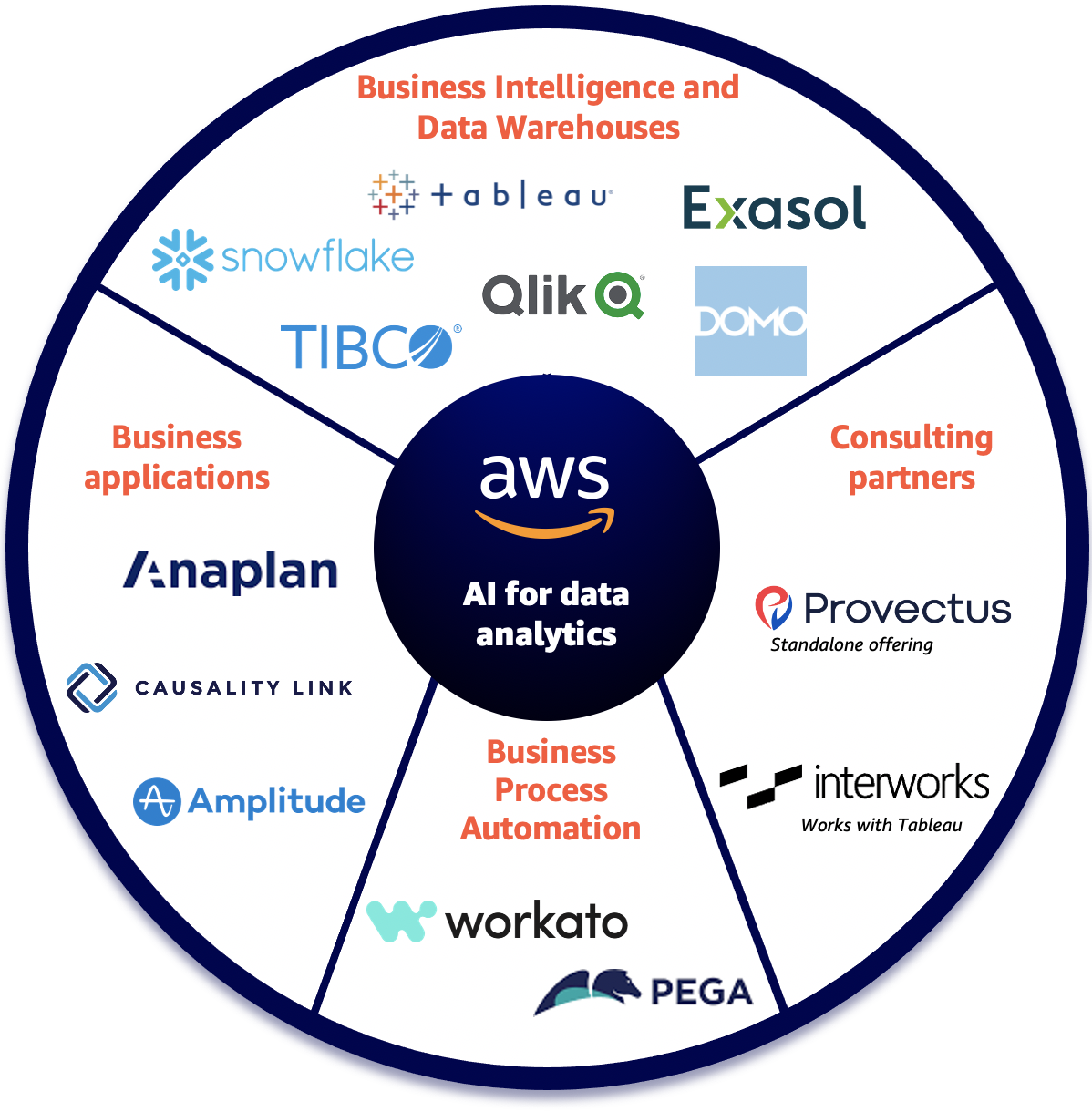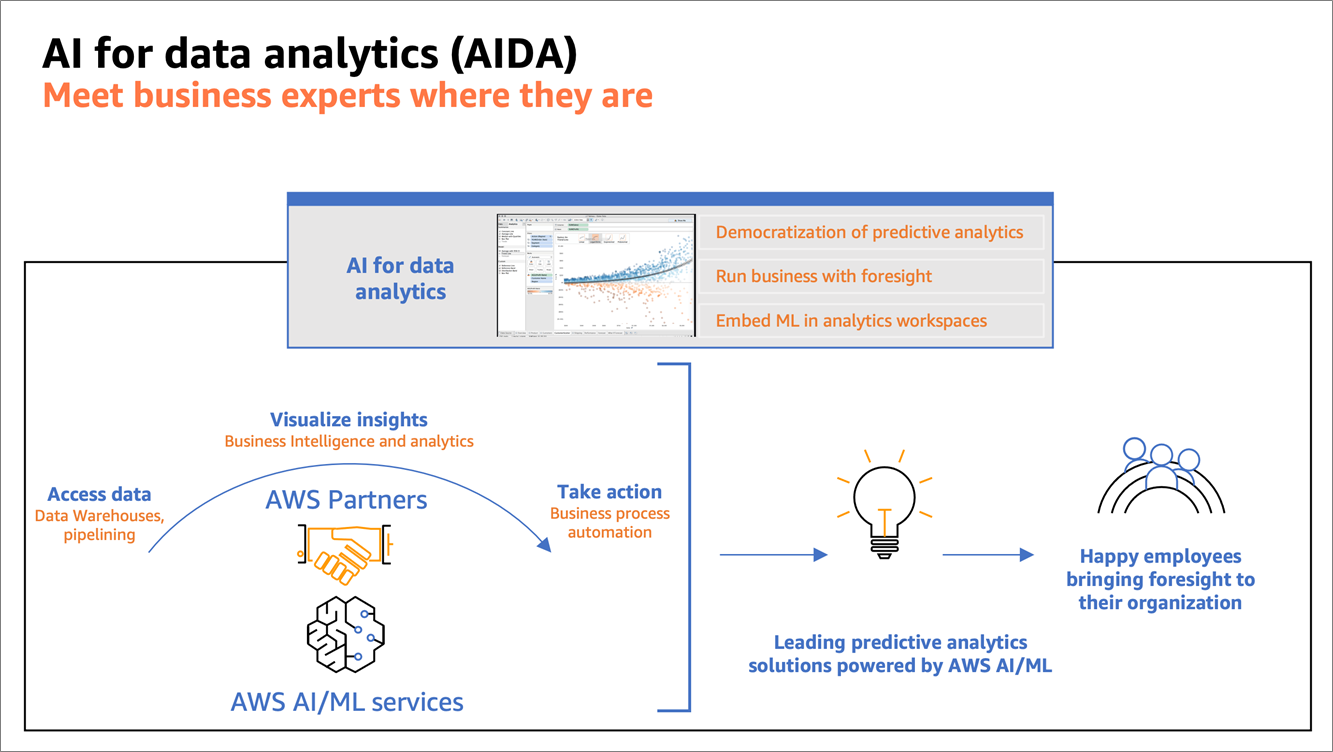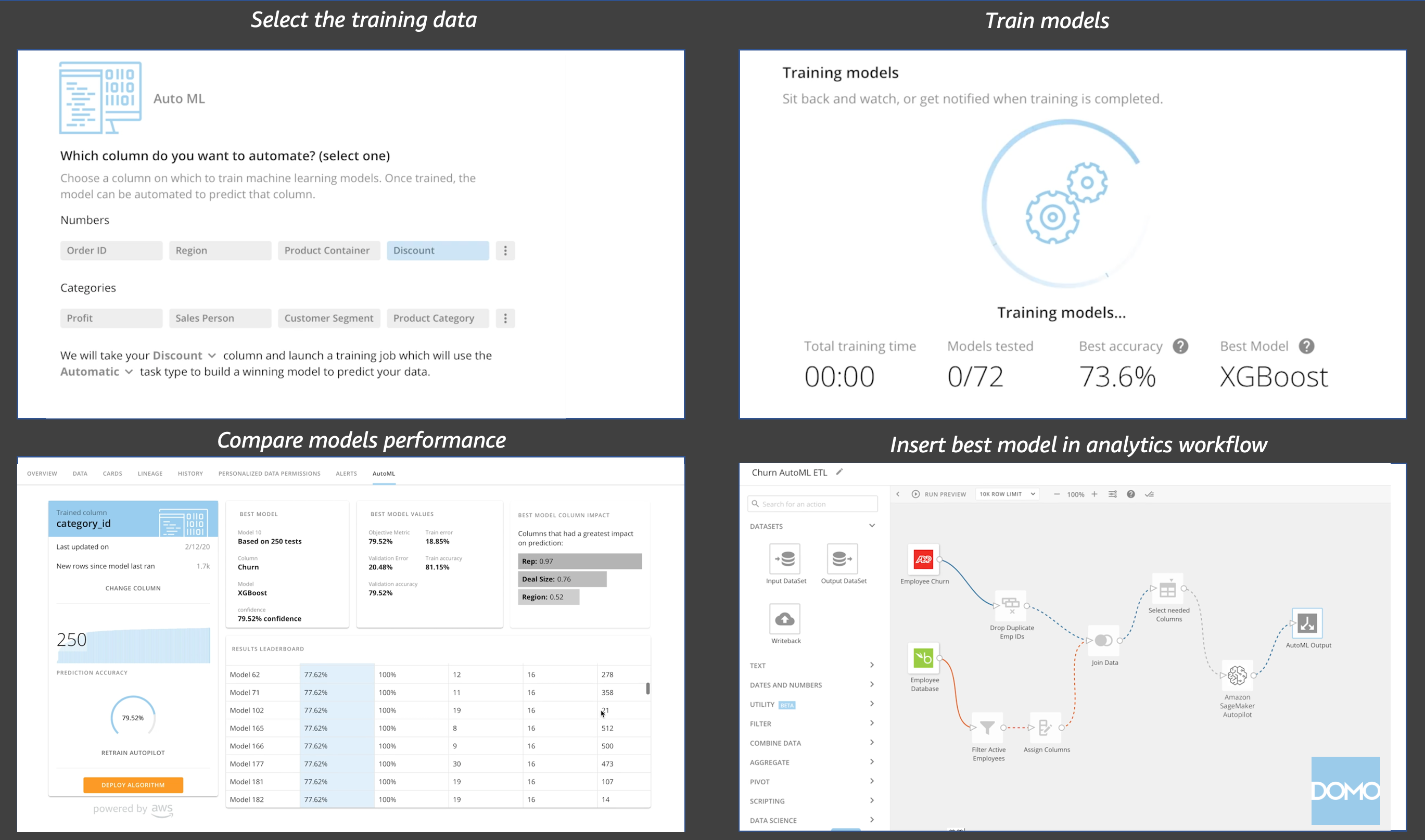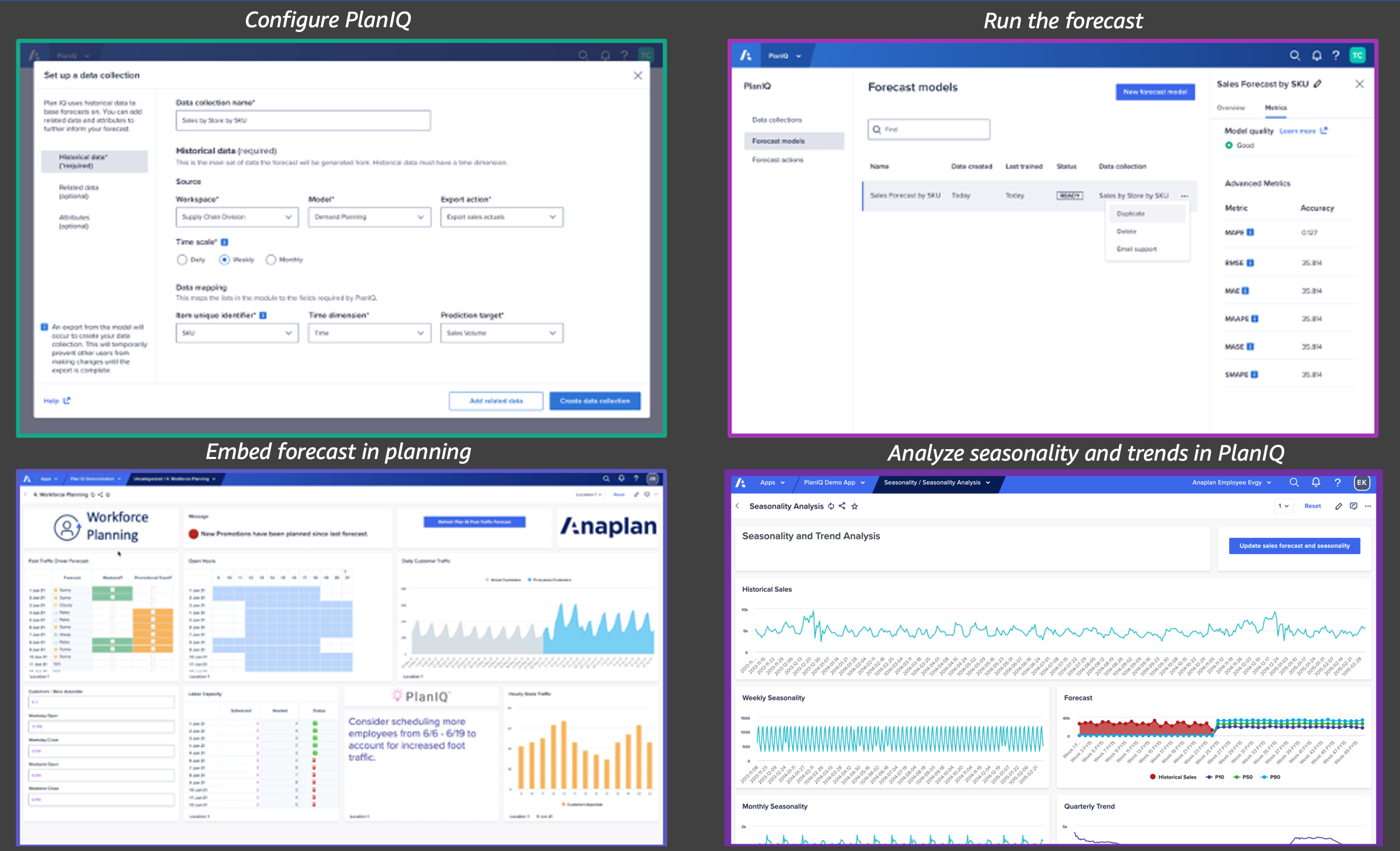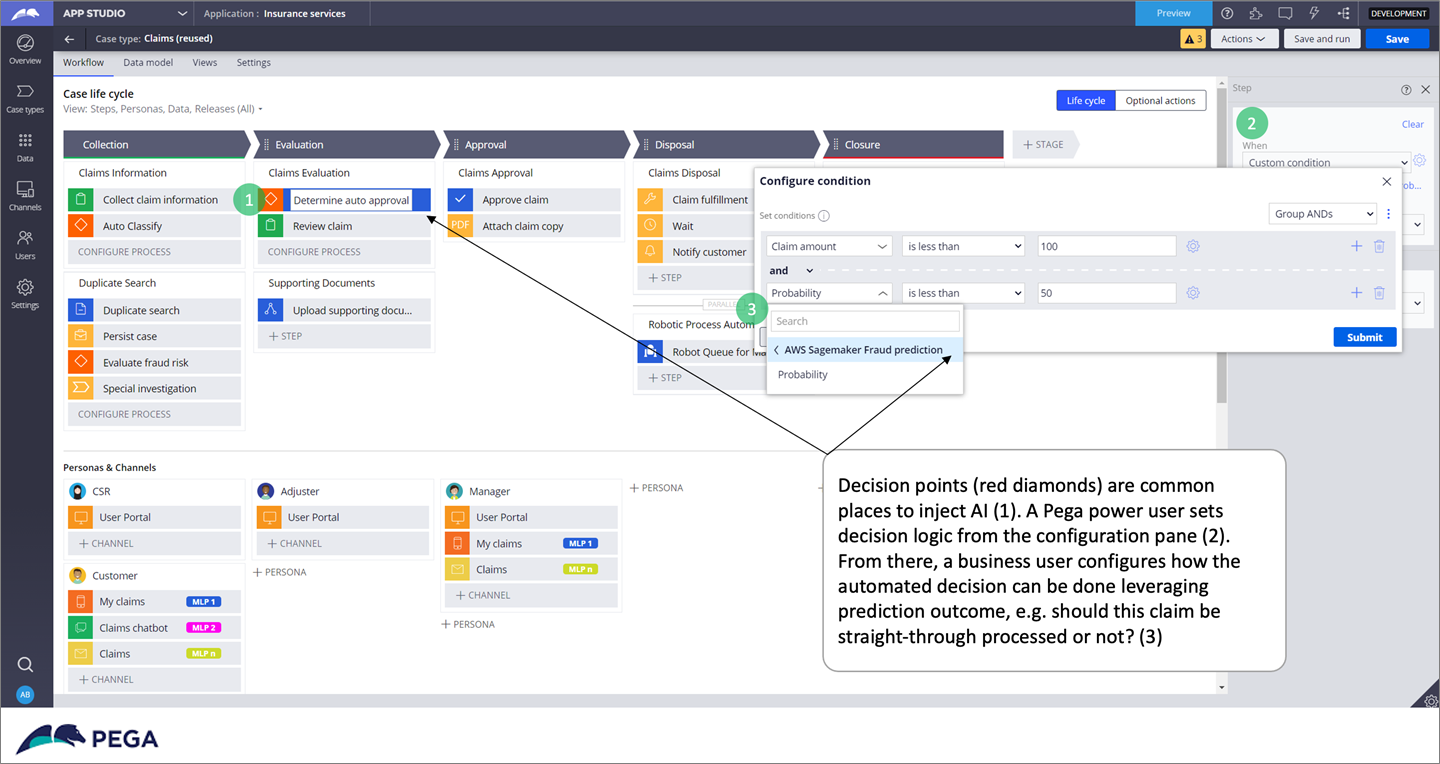AWS Partner Network (APN) Blog
AI for Data Analytics (AIDA) Partner Solutions Will Empower Business Experts with Predictive Analytics
By Paul Lasserre, Global Applied AI Segment Lead – AWS
By Dylan Tong, Partner Solutions Architect, AI-Augmented Analytics Leader – AWS
By Alice Bartose, Global Head of ML Partner Marketing – AWS
We are excited to introduce AI for data analytics (AIDA) partner solutions which embed predictive analytics into mainstream analytics workspaces.
AWS AIDA partner solutions make it easy for business experts to use artificial intelligence (AI) and machine learning (ML) to derive better insights from data and take action.
These AI/ML solutions from Amazon Web Services (AWS) Partners have interfaces and integrations that help bring predictive analytics into the normal workflow of business experts, those who use data to run their business, and those have limited data science experience.
AWS AIDA includes partner solutions from Amplitude, Anaplan, Causality Link, Domo, Exasol, InterWorks, Pegasystems, Provectus, Qlik, Snowflake, Tableau, TIBCO, and Workato. To learn more about AIDA partner solutions, please visit the AWS machine learning website.
Figure 1 – Introducing AI for data analytics (AIDA) partner solutions.
Crossing the Ability Chasm
Organizations have varying levels of maturity in their analytics journey. Many focus on historical insights and answer questions about what happened and why to facilitate business decisions. This is commonly known as descriptive and diagnostic analytics.
The more advanced stages of analytics—predictive and prescriptive analytics—focus on answering questions about what will happen and suggest optimal courses of action. The latter capabilities have a strong value proposition, as organizations that have foresight into their business have a competitive advantage.
Foresight can, for example, enable customer churn or employee attrition prediction and help organizations act accordingly. At Amazon, foresight has enabled demand forecasting to optimize the supply chain, inventory, and avoid lost opportunities in our consumer business for over two decades.
Building ML-driven analytics solutions for business users has historically been a complex project and usually requires deep experience building and maintaining specific ML models. It also involves complex collaboration dynamics between data scientists speaking Python and business experts speaking Excel or SQL, as well as those who are more familiar with workflows and data visualization tools than prompts and commands.
Other factors—including siloed data footprints, quality and compliance requirements, and transfers of model inputs and outputs in and out of fragmented systems—have made it difficult to coordinate foresight within organizations. As a result, many predictive analytics efforts end up being limited in scale due to the limitation of data science resources or hard-to-implement projects when the technical bar to empower business users with foresight is too high.
Itamar Ankorion, SVP at AWS AIDA partner Qlik, says: “Many business and data analysts are great at manipulating and analyzing data, but prefer visual tools and often lack the skills to use command-line interfaces.”
At AWS, we want to work together with partners to help customers cross this chasm between the world of data science and IT and business.
Benefits of empowering business experts with ML capabilities include:
- Improving employee experience and productivity by offering business experts access to predictive analytics within their favorite analytics tools.
- Lowering operational costs by using foresight to generate optimizations in each department—some examples include supply pre-positioning and re-order optimizations, or workforce scheduling.
- Driving top line growth by better predicting customer churn, creating next-best-action and next-best-offer playbooks, or predicting lifetime value of prospects and existing customers to adjust cost of acquisition or cost of retention accordingly.
- Addressing the shortage of data scientists by expanding the pool of skilled professional with business experts.
AWS AI for Data Analytics Partner Solutions
To overcome these challenges and solve common problems for business experts managing data with predictive potential and associated workflows, AWS offers AI for data analytics (AIDA) partner solutions: a variety of ML-powered analytics solutions available through AWS Partners for easy implementation.
These solutions are all built leveraging AWS AI/ML services such as the Amazon SageMaker end-to-end ML platform, and in particular Amazon SageMaker Autopilot, which enables users to automatically create ML models.
AWS AIDA partner solutions also leverage AWS AI services, a set of pre-trained services that provide ready-made intelligence for applications and workflows such as Amazon Forecast, a time-series forecasting managed service.
Participating partners are leading Independent Software Vendors (ISVs) and Systems Integrators (SIs) with database and data warehouse, business intelligence, or specialized analytics and business process automation expertise across industries. They bring advanced forms of analytics from data access, data visualization, and insights to downstream business process automation.
Figure 2 – AIDA value proposition.
With AWS AIDA partner solutions, we want to meet customers where they are by helping business experts who do not code access state-of-the art ML capabilities within their existing analytics workspaces. AWS AIDA partner solutions make some of the most popular ML use cases widely available to the business.
Ashish Thusoo, GM for ML and Workflow Automation at AWS, said: “AI for data analytics partner solutions aim at fostering the development of off-the-shelf capabilities for business users right within the analytics tools they already use. We partnered with leading companies in the analytics space to offer best-of-breed predictive analytics solutions, powered by AWS AI/ML.”
There are many important analytics applications where machine learning applied on tabular data can make a difference, from lifetime value (LTV), churn, or campaign outcome predictions, forecasting, or anomaly detection.
Imagine if a business expert (let’s say a data analyst) could simply define inputs in a table of values (typically by selecting relevant columns), define the output (another column), and then train a model to automatically recognize patterns so that moving forward new inputs can predict associated outputs.
This analyst might want to predict propensity-to-buy for the target audience of a new marketing campaign. Attributes such as demographic and behavioral data are selected as inputs and buying decision as the output. With historical data, a model is trained at the push of a button, providing a propensity-to-buy score for each new prospect.
For instance, AWS AIDA partner Snowflake is empowering users to train models and request new predictions with Amazon SageMaker Autopilot using a standard SQL query.
“Using the Snowflake and Amazon SageMaker Autopilot integration, teams can simplify the effort of transforming data into ML-powered insights, expanding the power of data science beyond the immediate data science teams,” said Torsten Grabs, Director of Product Management at Snowflake.
“Customers such as Western Union that tailor their customers’ digital banking experiences through propensity and segmentation models will be able to hyper-personalize those experiences with more granular models,” added Torsten. “This will reduce the heavy lift associated with building ML models and can lower operating costs through the automation of training and deploying state-of-the-art machine learning models from within Snowflake.”
Some AWS AIDA partners such as Snowflake have already engineered within their platform an end-to-end workflow in which a business expert can define the problem, select the relevant data to train a model, and use the output of the trained model to run inferences (predictions).
Other AWS AIDA partners solutions such as Amazon SageMaker for Tableau require machine learning models to be trained by a dedicated team within the organization (usually data scientists) who “ship” models with pre-defined validity domains to business experts.
Some AIDA partners enable both approaches as there is no good or bad, but it comes down to the level of the organization maturity with data and ML, nature of the use cases, and talents availability.
Let’s look at a few examples!
Data Cloud / Warehouse
As mentioned above, the Snowflake native integration with Amazon SageMaker Autopilot makes machine learning available in SQL to Snowflake users, both to train models and make predictions.
The integration enables business experts to effortlessly develop ML models and get new predictions without having to learn a new language or provision or manage infrastructure. This combines the power of Snowflake to process data at near infinite scale with the automated ML functionality of Amazon SageMaker Autopilot.
Figure 3 – Example with Snowflake .
Business Intelligence
Domo’s AutoML platform, powered by Amazon SageMaker Autopilot, allows users that are closer to the data and the business to automatically train ML models, use them to run analysis, and visualize data in real-time.
“With Domo AutoML, we garner insights faster and can more readily focus ways to add value back to the business versus going into the deep inner workings of data science,” said Dale Whitchurch, Director of Engineering Global Program Management Office at Arthrex, a Domo customer.
Figure 4 – Example with Domo.
Business Applications
Anaplan PlanIQ, powered by Amazon Forecast, enables teams across finance, sales, supply chain, and HR to evaluate more scenarios and unlock the value of ML-based insights to drive growth and optimize performance by analyzing large amounts of internal and external data. For example, planners can improve demand plans with external signals, decision history, and overrides to improve forecast confidence.
“Today’s pace of change makes it challenging to only rely on historical data to anticipate the future and build accurate plans,” said Rohit Shrivastava, Chief Product Officer at Anaplan. “With PlanIQ, Anaplan customers can build connected, forward-looking plans using predictive forecasting and agile scenario modeling. This fast, intelligent decision making helps business leaders move quickly, gaining a competitive edge in their markets.”
Figure 5 – Example with Anaplan.
Business Process Automation
With insights gained, a frequent next step is to streamline insights to automation by infusing the same ML models that power insights into business workflows to elevate downstream process automation.
Pegasystems integrated with Amazon SageMaker to allow business experts to take action by embedding trained models into workflow decision points.
Figure 6 – Example with Pegasystems.
Get Started with AWS AIDA Partner Solutions
If your organization can benefit from equipping business experts with foresight, we invite you to learn more about AWS AIDA partners who can help you, or connect with your AWS account team for more information.
- Amplitude
- Anaplan
- Causality Link
- Domo
- Exasol
- InterWorks
- Pegasystems
- Provectus
- Qlik
- Snowflake
- Tableau
- TIBCO
- Workato
If you’re an AWS Partner and would like to embed AWS AI/ML capabilities to infuse your product or solution with predictive analytics capabilities, learn more about AWS AI/ML services and reach out to your AWS Partner team.
